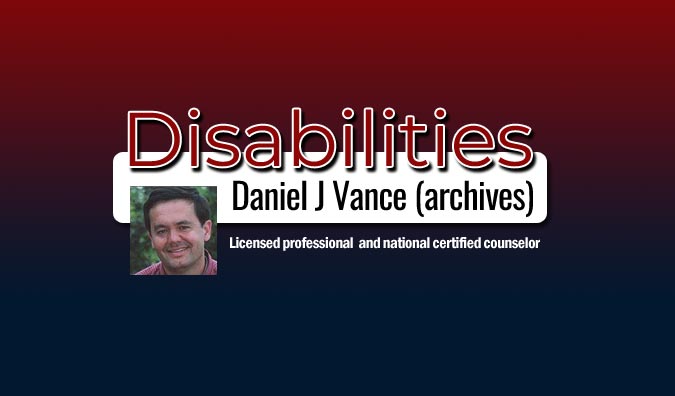In a recent column, I featured 66-year-old Ron Davis, the founder of Davis Dyslexia Association International. In that column, you learned a doctor had diagnosed Davis in the ’40s with a form of autism called Kanner’s syndrome, and that his mother had realized in fourth grade he was an “idiot savant.” (Davis’ words, not mine.) When he was 12, a teacher labeled him as “uneducatable mentally retarded” and other students were calling him retard, imbecile, and idiot.
Then at 17, barely able to read or talk, he tested “genius” on an I.Q. test and could solve complicated math problems. Instead of “retard,” people began calling him “genius,” and he started attending the University of Utah. He learned how to talk in complete sentences.
“I tried college for three semesters, but if you can’t read, you don’t get far,” Davis said in a telephone interview. He later would learn he had dyslexia, which is a learning disability affecting a person’s ability to recognize and comprehend written words.
Davis soon founded several engineering companies and become successful at real estate investing, but still was not able to read well until December 1980, when, at age 38, he had an epiphany. He suddenly realized he had been unable to read because of “disorientation,” and when he learned “how to turn off the disorientation,” i.e., eliminate common perceptual distortions, he was able to visit a library and read an entire book in one sitting, he said.
“I’d never done that before,” Davis said. “The book was Treasure Island. I had an experience beyond my ability to dream or pray.” One other thing happened that day: For the first time, he was able to accept himself as a “real human being” and not as a mistake “God or a doctor” had made, he said.
Davis believes all dyslexia symptoms are really symptoms of “disorientation.” He eventually founded Davis Dyslexia Association International and his book, “The Gift of Dyslexia,” has been translated into 21 languages. Davis Learning Strategies has more than 500 facilitators worldwide and the Davis Dyslexia Correction program has been translated into 39 languages.
Because dyslexia isn’t a disease, he doesn’t believe it needs curing. But it can be corrected, he claimed. He opposes phonics to teach dyslexic children how to read. His methods have caught on overseas more so than America, where most educators outright reject his non-phonics based approach.
(21+ years strong)
Welcome to the brighter side!
Get in front of local customers! 24/7 (365)





















